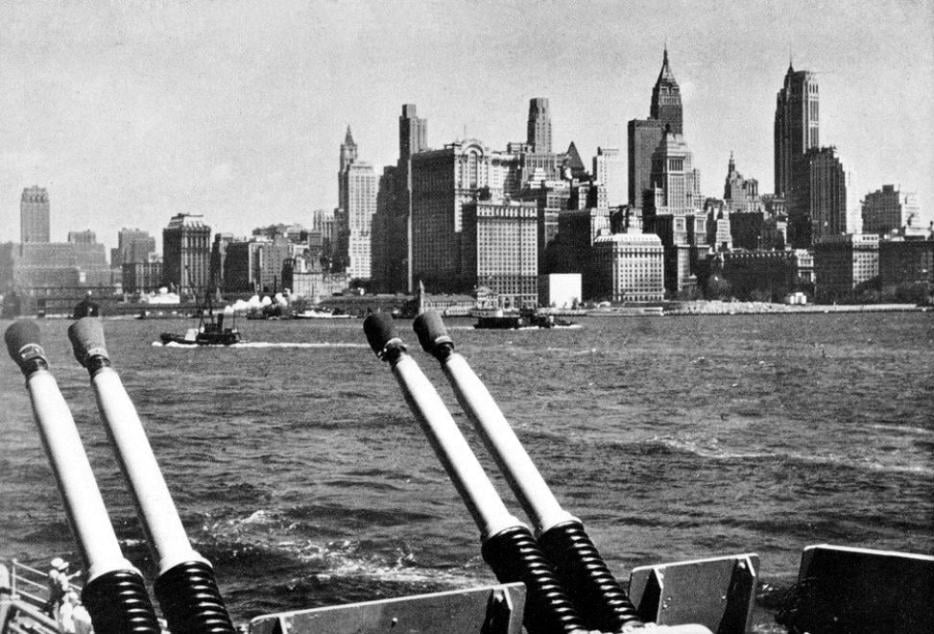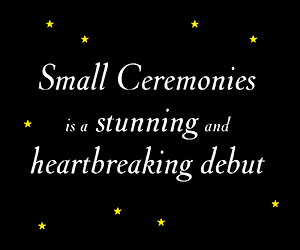About a year ago, while roaming through a bookstore in Toronto, I saw a new edition of The Catcher in the Rye. I’d devoured it as a teen, when it had served as my personal portal to New York City, romantically derelict hotels and rejecting conformity. I decided to re-read J.D. Salinger’s novel, which turns 65 this week (and, as of 2016, still sells 685 copies per day).
Fifteen years ago, I’d seen Holden Caulfield as an enfant terrible, a prep-school Peter Pan who divides the world into childlike and pure, adult and phony,11Number of phonies mentioned: 48 the patron saint of ducks in Central Park—whose safety he’s always worrying over—and the protector of vanquished children. I now read something less quirky, more serious, in the novel: it no longer seemed as much of an adventure story, but more of an exposition on what happens when a traumatized teenager takes the anonymizing big city as his Ativan.22Number of times Holden says he’s depressed: 31
I’m not the only one who overlooked the depth of Holden’s anxiety. When the novel was published in 1951, reviewers who weren’t scandalized by three uses of “fuck” tended to highlight lighter fare—Holden’s picaresque antics and boppy teenage voice. Some journalists focused on what a badass Holden was, stoking controversy among family-values types about the novel’s potential to corrupt young minds. As a result, a few schools banned the book, mostly because Holden hires a sex worker and—by their count—uses the word “goddamn” 285 times.33Number of times Holden uses profanity: 785
Verdict: he was having way too much fun for grade ten English. And while it’s true that Holden does have an insouciant swagger that’s a little bit Richard Hell, a touch Mickey Mouse Club-era Ryan Gosling, when you read deeper, you see that Salinger was showing us what lay beneath Holden’s bravado.44Number of times Holden says he’s nervous: 16
More than a story of rebellion, The Catcher in the Rye is about how repression metabolizes trauma into anxiety.
*
Looking at how the novel came to be, it’s easy to see how that trauma got on the page. Salinger wrote large chunks of it while he was a soldier in World War II, on the typewriter he carried in his knapsack. While European cities fell to ash, Salinger built New York City on the page. As teenage soldiers died around him, Salinger brought Holden to life. On D-Day, as part of the 4th Infantry Division, Salinger stormed onto Utah Beach with six chapters in his bag. Two months later, Salinger was part of the team of Americans who liberated Dachau Concentration Camp. He saw grown men and women who weighed 65 pounds and twisted piles of corpses, a devastation that he never got over. After spending Armistice Day alone in a room in Paris wondering what it would feel like to shoot himself in the hand, he became worried enough about his cracking mental state to check himself into hospital in Nuremberg. When he went back to New York City to continue writing, the trauma of war followed him. “You could live a lifetime and never really get the smell of burning flesh out of your nose,” he later told his daughter.
Salinger shows us the model of anxiety writ large.
By then, America had begun to understand the psychological damage war inflicts on soldiers. While World War I physicians had already identified “shell shock,” it was only after World War II that military psychiatrists, who had worked with men like Salinger, contributed their observations to a new book that offered a more rigorous, scientific taxonomy of mental complaints, The Diagnostic Statistics Manual (DSM). It would become the most major work about psychiatric illnesses, ever, the desk reference for psychiatrists around the world. Anxiety—then called “psychoneurotic illness”—took up a big share of its page count. “Gross stress reaction” is what they called the specific anxiety reaction to traumatic experience, the precursor to today’s PTSD. Crucially, the DSM noted, not everyone who experienced a trauma would go on to develop anxiety. Some people were more biologically inclined to it. Yet, what made it much more likely for someone to develop anxiety was the degree to which the trauma was unresolved or the emotions around it repressed. Following a trauma, two courses of action were possible: a) expression = recovery. b) Repression = getting more nervous, more sick.
*
The structure of The Catcher in the Rye is built around trauma and repression. When the novel opens, Salinger’s protagonist, Holden, is reeling from two traumas: his little brother Allie has died of leukemia and his parents, in a misguided attempt to protect him, bar him from attending the funeral before shipping him off to prep school. He’s expelled from that school, and three others. He witnesses a classmate committing suicide by jumping from a window. Holden reports hearing the thud when the boy hits the ground. As with the death of his brother, Holden doesn’t talk to anyone about how he’s feeling. He pushes his trauma inside. Quickly, almost to the letter of the DSM, Holden’s life explodes with anxiety.
As I re-read the novel as an adult, I was struck by how pervasive anxiety is in Holden’s life, right from the start. The novel’s inciting incident is itself an anxious flub: Holden takes his fencing team to a competition by subway (he’s their manager) and is so nervous about missing their stop that he keeps getting up to check the map—up, down, up, down—to the point where he causes them to miss their stop and forgets their gear on the subway. His team ostracizes him. Soon after, an increasingly isolated and rattled Holden decides to run away from school. “I needed a vacation,” he says. “My nerves were pretty shot.” Throughout the novel, he tells us he’s nervous more than 16 times. He reports his hair has turned mostly grey, presumably from stress. He becomes obsessed with death. He imagines committing suicide, by my count, seven times. “I felt so lonesome, I almost wished I was dead.” “What I really felt like doing was jumping out that window.” In a diatribe in which he rails against the entire military complex, he offers to end the next world war by personally volunteering to sit on the A-bomb. To a mother of a schoolmate, he claims to have a brain tumor. Not even his room is free from death: Holden lives in a dormitory bearing the namesake Ossenberger, a man “who made a pot of dough in the undertaking business.” When he’s drunk, he pretends he’s been shot and staggers around clutching his stomach. Of physical symptoms, he gets the classic anxiety triumvirate: stomachache, nausea, and gastrointestinal problems. “When I worry,” Holden tells us, “I really worry. Sometimes I worry so much I have to go to the bathroom. But then I worry so much that I don’t have to go.” Later in the novel, Holden has a panic attack.
By writing Holden’s feelings of disassociation, nerves, constipation, diarrhea, panic attacks, repetitive thoughts, rooted in traumatic events and repression, Salinger shows us the model of anxiety writ large. (He offers a much more distilled version, too, of the mental anguish suffered by World War II veterans in his story “A Perfect Day for Bananafish”).
Yet one of the most interesting qualities about The Catcher in Rye is its ambivalence about whether or not Holden even has a mental illness. We do learn at the beginning of the novel that Holden is in a mental institution and are reminded again at the end, but Salinger never actually shows Holden in a hospital. No gowns, no chaises, no pills. The neon smudges, nighttime blues, and cheap hotels of New York City, these become Holden’s hospital. Of actual psychiatry, Holden expresses caustic skepticism. On the first page of the novel, he derides psychoanalysis and its bent on retrieving childhood memories, saying he isn’t into “that David Copperfield crap.” When a former classmate tells Holden to get therapy so he can “recognize the patterns of his own mind,” Holden balks. A former teacher mentions Wilhelm Stekel, a noted early 20th century psychologist, but Holden seems bored. Consistently, Holden refuses to see himself as a subject of mental health discourse, engage in discussions about his own mental health or even regard psychology as a topic worthy of his time. Holden is a sexy guy, he’s a nervous guy, he’s not a phony guy, he’s a New York City guy, but he never defines himself as a sick guy. This reluctance is part of Holden’s teenage anti-institutional-swagger, but it is also the narrative mechanism that allows us to appreciate Holden as a rounded person, not a pathology, a statistic, a walking hospital gown.
*
As a teenager, I had understood a particular scene in the novel—that huge field of rye Holden imagines standing in, where he saves children from falling off a cliff—to be a simple and pleasant image that gives Holden peace of mind, akin to a really gorgeous mental screensaver. Now I see that it’s a bit more complicated. In the field of rye lies the possibility of changing history: Holden can save his brother from death, and he can save that classmate who committed suicide, and prevent himself from becoming anxious and surrounded by phonies who don’t ask, understand or care about the trauma he’s been through.
As for practical advice on how to cope with anxiety, The Catcher in the Rye doesn’t offer much or give us any aphorisms about how it’s better to have suffered and learned. Holden, knowing Holden, would have chalked such talk up to a bunch of phoniness. Holden’s coping strategies—making up fields of rye in his head, mythologizing children, erasing “fucks” off walls, and walking around New York City in a weird red hunting cap, alone—were ultimately poor substitutes for meaningful interaction with empathetic people.
At fifteen, I was unraveling from anxiety, but I didn’t know it at the time. I thought I had a problem with my shoes. When I’d walk down the hall at school, I’d sometimes stop feeling connected to the ground—my feet would literally feel like they were three inches off the ground, like I was floating—which would make me feel like I was going to fall down on my face. The more I worried about what was wrong with me, the worse it got. I worried that if I didn’t really focus on staying connected to the ground I would disappear. I ended up buying a pair of thin-soled canvas slippers in Chinatown, which helped: anytime I felt like I was floating away, all I needed to do was press my toes down to feel the floor. You’re here, my toes said, even though my body was a million miles away. It was uncomfortable and it made no sense.
Fifteen years later, I re-read this passage in The Catcher in the Rye. It is one of the most vivid yet simple descriptions of panic I have ever read. In three sentences, Salinger captures how panic detaches Holden from his body and disassociates him from his environment to the point where he fears he will disappear:
Then all of a sudden, something very spooky started happening. Every time I came to the end of a block and stepped off the goddamn curb, I had this feeling that I’d never get to the other side of the street. I thought I’d just go down, down, down, and nobody’d ever see me again. Boy, did it scare me.






